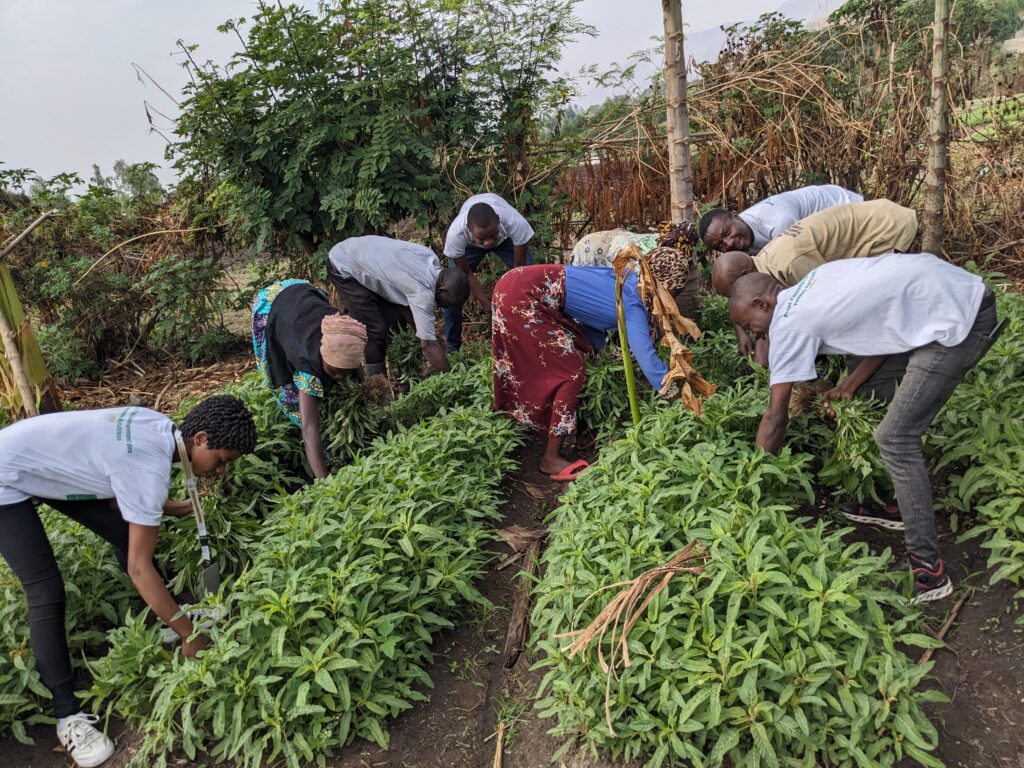
On Saturday, June 18, 2023, three staff members, including mission leader Espoir Lwango, visited local authorities to discuss the PAFA project. The absence of the chief necessitated rescheduling. During this visit, they met a few beneficiaries, though most had left for their fields due to transportation delays from Uvira to Kawizi.
On Saturday, June 24, the Executive Director, accompanied by an agricultural engineer and the Financial Officer, met with the village chief and identified beneficiaries. Initially, 63 people registered for the compost production training, but 50 attended the activity. In line with our safeguarding policy, photos of beneficiaries are not taken without their consent.
Objectives of the Training Program
The primary goal of the training is to increase the yield of women farmers to mitigate food insecurity. By the end of the training, participants will be able to:
- Produce and use compost effectively in vegetable farming to reduce the cost of agricultural inputs like chemical fertilizers.
- Understand how to regenerate soil’s physico-chemical properties and biology using compost.
- Train other women farmers on compost production and usage.
Compost Production Process
The training is hands-on and participatory. After introducing the CSC-ASBL team and KAWIZI beneficiaries, the objectives were presented, followed by a detailed demonstration of compost production steps, maturity duration, and usage, as outlined below:
| Steps | Description | Duration |
| Site Selection | Choose a flat, secure site away from animals. | 15 minutes |
| Fixing Pillars | Mark a 2m x 2m area; dig holes and fix pillars to create the compost frame. | 30 minutes |
| Layer Filling | Arrange layers of fresh materials, dry materials, and cow dung, each 20-25cm high. Add water to activate microbes. | 1.5 hours or more |
| Roofing | During rain, cover the compost pile; in dry conditions, add straw to protect from direct sunlight. | 5-20 minutes |
| Turning | Turn the pile 3-4 times, starting every 5-6 days, then every 3 days until maturity. | 2 hours |
| Compost Maturity | The compost is ready when it has no foul odor and is blackish in color. | 21-30 days |
| Compost Application | Apply in stages during cultivation: 0.5kg/m² during plowing, 0.5kg in 20L of water after germination, repeated as needed. |
Compost Turning
Turning compost accelerates the decomposition of organic matter. This involves moving top layers to the bottom and vice versa, promoting effective breakdown by soil microorganisms.
Distribution of Mature Compost
The activity involved distributing the mature compost and explaining its use as detailed above. Beneficiaries requested CSC-ASBL to test the final compost results with them. An experimental field was allocated and maintained, yielding a harvest within a month. One beneficiary remarked,
We didn’t know this method; it’s impressive. I won’t have to worry about my home garden anymore.
Demonstration Harvest
On September 8, 2023, women farmers harvested crops from the demonstration field where compost was applied. They retained 80% of the yield, gave 10% to CSC-ASBL members with their consent, and 10% to the village chief.
The women appreciated the increased yield from using compost and encouraged CSC-ASBL to continue supporting their agricultural activities to combat hunger, food insecurity, and malnutrition, and to boost their income. They also highlighted the need for better tools to improve their agricultural work conditions.


